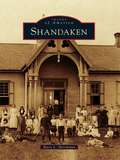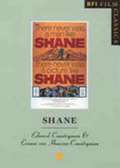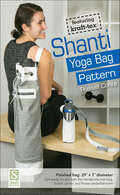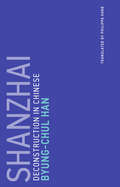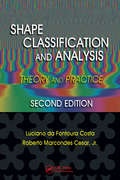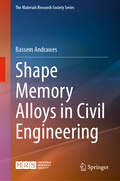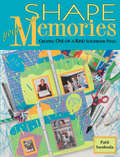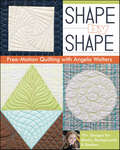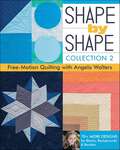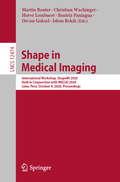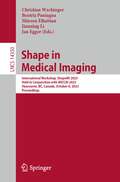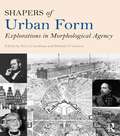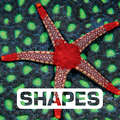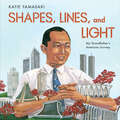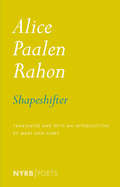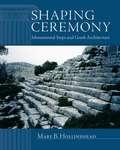- Table View
- List View
Shamong (Images of America)
by George D. FlemmingShamong Township, incorporated in 1852, was originally a part of Evesham Township. It is one of many communities that make up the Pinelands National Reserve. Shamong is a Native American word meaning "place of the horn" or "place of many deer." From 1758 until 1802, 3,284 acres of the township were home to the first and only Native American reservation in New Jersey. Prominent citizens of old Shamong included John B. Gardner, former mayor of Atlantic City, Civil War veteran, and United States congressman. James Still, the famed "black doctor of the Pines," was born in Shamong in 1812, and his younger brother, William Still, is celebrated as the father of the Underground Railroad. The photographs in Shamong provide a visual reminder of the past and celebrate the history of this community, which remains a vibrant rural and residential area.
Shandaken (Images of America)
by Mary L. HerrmannShandaken is known as the "Heart of the Catskill Mountains." In the town's early years, leather tanning, barrel hoop shaving, and quarrying were mainstays of employment and were relied on by local residents. With time, each of these industries became obsolete due to modern advances and developments. Shandaken was revitalized with the arrival of the railroad, which enabled New York City residents to escape the summer heat and travel to the many hotels that sprang up in town. Tourism increased with the formation of the Forrest Preserve, the Catskill Park, and the New York City watershed. Later winter tourism boomed with the popularity of skiing. Although Shandaken has endured many changes, it has retained its charm and historic character.
Shane
by Edward Countryman Evonne Von Heussen-CountrymanDirected by George Stevens, then one of Hollywood's most successful filmmakers, "Shane" (1952) is one of the most revered and imitated of all westerns. Starring Alan Ladd as a mysterious drifter who protects a fledgling community from a predatory gang, "Shane" is one of the definitive reimaginings of America's frontier mythology. This is, remarkably, the first substantial study of "Shane." In it, Edward Countryman and Evonne von Heussen-Countryman show, with reference to a wide range of historical and archival sources, how subtly the film treats some fundamental themes: family, the history of settlement and community in America, violence, and the culture of the gun.
Shanghai Homes: Palimpsests of Private Life
by Jie LiExploring three dimensions of private life territories, artifacts, and gossip Li re-creates the sounds, smells, look, and feel of home over a tumultuous century
Shanghai Homes: Palimpsests of Private Life (Global Chinese Culture)
by Jie LiIn the dazzling global metropolis of Shanghai, what has it meant to call this city home? In this account—part microhistory, part memoir—Jie Li salvages intimate recollections by successive generations of inhabitants of two vibrant, culturally mixed Shanghai alleyways from the Republican, Maoist, and post-Mao eras. Exploring three dimensions of private life—territories, artifacts, and gossip—Li re-creates the sounds, smells, look, and feel of home over a tumultuous century. First built by British and Japanese companies in 1915 and 1927, the two homes at the center of this narrative were located in an industrial part of the former "International Settlement." Before their recent demolition, they were nestled in Shanghai's labyrinthine alleyways, which housed more than half of the city's population from the Sino-Japanese War to the Cultural Revolution. Through interviews with her own family members as well as their neighbors, classmates, and co-workers, Li weaves a complex social tapestry reflecting the lived experiences of ordinary people struggling to absorb and adapt to major historical change. These voices include workers, intellectuals, Communists, Nationalists, foreigners, compradors, wives, concubines, and children who all fought for a foothold and haven in this city, witnessing spectacles so full of farce and pathos they could only be whispered as secret histories.
Shanti Yoga Bag Pattern: Featuring kraft-tex
by Russell ConteCombine durable and stylish kraft-tex with hefty denim to create a yoga bag meant to last! The handy shoulder strap and exterior zippered pocket are pretty and practical, while the water bottle holder with an adjustable strap adds even more functionality. Then give some flair to the whole ensemble with a magnolia flower accent made entirely of kraft-tex. Meanwhile, learn new skills inspired by shoe-making, including a goiser stitch around the zippered pocket and brogueing details on the water bottle holder that show off the back of the denim through the kraft-tex. Perfect gift for yourself or the yogi in your life Work with pristine, understated kraft-tex, or embellish your bag with paints and inks Add interest to your project as you learn new techniques for working with thicker materials
Shantytown, USA: Forgotten Landscapes of the Working Poor
by Lisa GoffShantytowns once occupied a central place in America's urban landscape. Lisa Goff shows how these resourceful dwellings were not merely the byproducts of hardship but potent assertions of self-reliance. Their legacy is felt in sites of political activism, from campus shanties protesting apartheid to the tent cities of Occupy Wall Street.
Shanzhai: Deconstruction in Chinese (Untimely Meditations #8)
by Byung-Chul HanTracing the thread of “decreation” in Chinese thought, from constantly changing classical masterpieces to fake cell phones that are better than the original.Shanzhai is a Chinese neologism that means “fake,” originally coined to describe knock-off cell phones marketed under such names as Nokir and Samsing. These cell phones were not crude forgeries but multifunctional, stylish, and as good as or better than the originals. Shanzhai has since spread into other parts of Chinese life, with shanzhai books, shanzhai politicians, shanzhai stars. There is a shanzhai Harry Potter: Harry Potter and the Porcelain Doll, in which Harry takes on his nemesis Yandomort. In the West, this would be seen as piracy, or even desecration, but in Chinese culture, originals are continually transformed—deconstructed. In this volume in the Untimely Meditations series, Byung-Chul Han traces the thread of deconstruction, or “decreation,” in Chinese thought, from ancient masterpieces that invite inscription and transcription to Maoism—“a kind a shanzhai Marxism,” Han writes.Han discusses the Chinese concepts of quan, or law, which literally means the weight that slides back and forth on a scale, radically different from Western notions of absoluteness; zhen ji, or original, determined not by an act of creation but by unending process; xian zhan, or seals of leisure, affixed by collectors and part of the picture's composition; fuzhi, or copy, a replica of equal value to the original; and shanzhai. The Far East, Han writes, is not familiar with such “pre-deconstructive” factors as original or identity. Far Eastern thought begins with deconstruction.
Shape Classification and Analysis: Theory and Practice, Second Edition (Image Processing Series)
by Luciano da Costa Roberto Marcond Cesar, Jr.Because the properties of objects are largely determined by their geometric features, shape analysis and classification are essential to almost every applied scientific and technological area. A detailed understanding of the geometrical features of real-world entities (e.g., molecules, organs, materials and components) can provide important clues about their origin and function. When properly and carefully applied, shape analysis offers an exceedingly rich potential to yield useful applications in diverse areas ranging from material sciences to biology and neuroscience.Get Access to the Authors’ Own Cutting-Edge Open-Source Software Projects—and Then Actually Contribute to Them Yourself! The authors of Shape Analysis and Classification: Theory and Practice, Second Edition have improved the bestselling first edition by updating the tremendous progress in the field. This exceptionally accessible book presents the most advanced imaging techniques used for analyzing general biological shapes, such as those of cells, tissues, organs, and organisms. It implements numerous corrections and improvements—many of which were suggested by readers of the first edition—to optimize understanding and create what can truly be called an interactive learning experience. New Material in This Second Edition Addresses Graph and complex networks Dimensionality reduction Structural pattern recognition Shape representation using graphs Graphically reformulated, this edition updates equations, figures, and references, as well as slides that will be useful in related courses and general discussion. Like the popular first edition, this text is applicable to many fields and certain to become a favored addition to any library. Visit http://www.vision.ime.usp.br/~cesar/shape/ for Useful Software, Databases, and Videos
Shape Memory Alloys in Civil Engineering (The Materials Research Society Series)
by Bassem AndrawesThis book presents a new class of metallic materials, called shape memory alloys (SMAs), as emerging materials for civil engineering applications. These materials have been used for decades in high-end fields like the aerospace and biomedical fields, and possess extraordinary properties that have attracted the attention of civil engineering researchers and practitioners for over 25 years. In this volume, based on 20 years of research findings, the author describes how SMAs started to find their way into practical applications in civil engineering. And that, like any metal, SMAs are produced in any shape, size, or form including wire, bar, and sheet, but unlike other metals, SMAs exhibit a unique ability to recover their original shape/size after being excessively deformed. Given the demand for sustainability and resilience in civil engineering applications, this book is ideal for civil engineering practitioners and materials researchers concerned with building materials and civil infrastructure.
Shape Perception in Human and Computer Vision: An Interdisciplinary Perspective
by Sven J. Dickinson Zygmunt PizloThis comprehensive and authoritative text/reference presents a unique, multidisciplinary perspective on Shape Perception in Human and Computer Vision. Rather than focusing purely on the state of the art, the book provides viewpoints from world-class researchers reflecting broadly on the issues that have shaped the field. Drawing upon many years of experience, each contributor discusses the trends followed and the progress made, in addition to identifying the major challenges that still lie ahead. Topics and features: examines each topic from a range of viewpoints, rather than promoting a specific paradigm; discusses topics on contours, shape hierarchies, shape grammars, shape priors, and 3D shape inference; reviews issues relating to surfaces, invariants, parts, multiple views, learning, simplicity, shape constancy and shape illusions; addresses concepts from the historically separate disciplines of computer vision and human vision using the same "language" and methods.
Shape Your Memories: Creating One-of-a-Kind Scrapbook Pages
by Patti SwobodaTransform square and rectangular scrapbook pages and page protectors into any shape imaginable! With Patti Swoboda's innovative technique, scrapbookers of all ages and skill levels can create shaped pages that will add excitement and new dimension to their albums. Readers will learn, through step-by-step instructions and photographs, the basic technique for creating shaped pages using common scrapbooking tools and Staedtler's Hot Foil Pen. They will then be guided through the process of taking a basic pattern and turning it into different variations, including a bell that can be transformed into a frog, penguin, elephant, and even a dog! Bonus ideas for using decorative edge scissors are also presented. Groundbreaking technique in scrapbooking Detailed, step-by-step instructions and photographs ensure success Features 12 projects for shaped scrapbook pages and protectors Full-size patterns
Shape by Shape Free—Motion Quilting: 70+ Designs for Blocks, Backgrounds & Borders
by Angela WaltersGet into shape: The ultimate visual guide for free-motion quilting in specific geometric shapes • Follow step-by-step illustrations to create more than 70 free-motion quilting designs to use in specific shapes, negative space, and borders • Features full-page quilt photos, close-up details of stitched designs, and a comprehensive visual index • Best-selling author Angela Walters takes you to the next level in free-motion quilting by showing you how to manipulate shapes into modern designs It's easy to plan your machine quilting - simply open Shape by Shape Free-Motion Quilting with Angela Walters and find creative inspiration on every page. User-friendly and visually exciting, the contents are first divided into three sections: Blocks, Negative Space, and Borders. Then, to make it even more accessible, the Blocks section is further organized by five shapes: Squares, Triangles, Circles, Diamonds, and Hexagons. With an illustrated index, more than 70 free-motion quilting designs, crystal-clear instructions, and gorgeous full-page photographs, this is the go-to resource you’ll want handy before starting any quilting project.
Shape by Shape: Free-Motion Quilting with Angela Walters
by Angela WaltersBest-selling author...Over 75,000 books sold! You asked for it…you’ve got it! Best-selling author Angela Walters is back with 70+ all-new free-motion designs and variations to take your quilting to the next level. Tackle your quilt top one bite at a time, with ideas for quilting specific shapes—squares, rectangles, triangles, circles, diamonds, and hexagons—plus background fillers and borders. Quilt planning is easier than ever with step-by-step illustrations and detail shots of each motif, plus stunning full-page quilt photos and a handy visual index. Each versatile design is perfect for use with your longarm, midarm, or home sewing machine. • Take the next step in free-motion quilting! Angela Walters shares 70+ free-motion quilting designs and variations to mix and match • Gorgeous designs for every shape—quilt blocks, backgrounds, and borders • Step-by-step illustrations, visual index, full-page quilt photos, and photo details of motifs • For longarm, midarm, and domestic sewing machines
Shape in Medical Imaging: International Workshop, ShapeMI 2018, Held in Conjunction with MICCAI 2018, Granada, Spain, September 20, 2018, Proceedings (Lecture Notes in Computer Science #11167)
by Martin Reuter Christian Wachinger Hervé Lombaert Beatriz Paniagua Marcel Lüthi Bernhard EggerThis book constitutes the proceedings of the Workshop on Shape in Medical Imaging, ShapeMI 2018, held in conjunction with the 21st International Conference on Medical Image Computing, MICCAI 2018, in Granada, Spain, in September 2018. The 26 full papers and 2 short papers presented were carefully reviewed and selected for inclusion in this volume. The papers discuss novel approaches and applications in shape and geometry processing and their use in research and clinical studies and explore novel, cutting-edge theoretical methods and their usefulness for medical applications, e.g., from the fields of geometric learning or spectral shape analysis.
Shape in Medical Imaging: International Workshop, ShapeMI 2020, Held in Conjunction with MICCAI 2020, Lima, Peru, October 4, 2020, Proceedings (Lecture Notes in Computer Science #12474)
by Martin Reuter Christian Wachinger Hervé Lombaert Orcun Goksel Islem Rekik Beatriz PaniaguaThis book constitutes the proceedings of the International Workshop on Shape in Medical Imaging, ShapeMI 2020, which was held in conjunction with the 23rd International Conference on Medical Image Computing and Computer Assistend Intervention, MICCAI 2020, in October 2020. The conference was planned to take place in Lima, Peru, but changed to a virtual format due to the COVID-19 pandemic. The 12 full papers included in this volume were carefully reviewed and selected from 18 submissions. They were organized in topical sections named: methods; learning; and applications.
Shape in Medical Imaging: International Workshop, ShapeMI 2023, Held in Conjunction with MICCAI 2023, Vancouver, BC, Canada, October 8, 2023, Proceedings (Lecture Notes in Computer Science #14350)
by Christian Wachinger Beatriz Paniagua Jan Egger Jianning Li Shireen ElhabianThis volume comprises the proceedings of the International Workshop, ShapeMI 2023, which took place alongside MICCAI 2023 on October 8, 2023, in Vancouver, British Columbia, Canada.The 23 selected full papers deal with all aspects of leading methods and applications for advanced shape analysis and geometric learning in medical imaging.
Shaped By War
by Don McCullinNo other photographer in modern times has recorded war and its aftermath as widely and unsparingly as Don McCullin. After a childhood in London during the Blitz, and after the hardships of evacuation, McCullin feels his life has indeed been shaped by war.From the building of the Berlin Wall at the height of the Cold War to El Salvador and Kurdistan, McCullin has covered the major conflicts of the last fifty years, with the notable exception of the Falklands, for which he was denied access. His pictures from the Citadel in Hue and in the ruins of Beirut are among the most unflinching records of modern war. The publication of many of his greatest stories in the Sunday Times magazine did much to raise the consciousness of a generation, even if he himself now fears that photographs cannot prevent history from repeating itself. The brutality of conflict returns over and over again. McCullin here voices his despair.McCullin recounts the course of his professional life in a series of devastating texts on war, the events and the power of photography. The conclusion of the book marks McCullin’s retreat to the Somerset landscape surrounding his home, where the dark skies over England remind him yet again of images of war. Despite the sense of belonging and even contentment, for him there is no final escape.
Shapely Bodies: The Image of Porcelain in Eighteenth-Century France (Studies in Seventeenth- and Eighteenth-Century Art and Culture)
by Christine A. JonesShapely Bodies: The Image of Porcelain in Eighteenth-Century France constructs the first cultural history of porcelain making in France. It takes its title from two types of “bodies” treated in this study: the craft of porcelain making shaped clods of earth into a clay body to produce high-end commodities and the French elite shaped human bodies into social subjects with the help of makeup, stylish patterns, and accessories. These practices crossed paths in the work of artisans, whose luxury objects reflected and also influenced the curves of fashion in the eighteenth century. French artisans began trials to reproduce fine Chinese porcelain in the 1660s. The challenge proved impossible until they found an essential ingredient, kaolin, in French soil in the 1760s. Shapely Bodies differs from other studies of French porcelain in that it does not begin in the 1760s at the Sèvres manufactory when it became technically possible to produce fine porcelain in France, but instead ends there. Without the secret of Chinese porcelain, artisans in France turned to radical forms of experimentation. Over the first half of the eighteenth century, they invented artificial alternatives to Chinese porcelain, decorated them with French style, and, with equal determination, shaped an identity for their new trade that distanced it from traditional guild-crafts and aligned it with scientific invention. The back story of porcelain making before kaolin provides a fascinating glimpse into the world of artisanal innovation and cultural mythmaking. To write artificial porcelain into a history of “real” porcelain dominated by China, Japan, and Meissen in Saxony, French porcelainiers learned to describe their new commodity in language that tapped into national pride and the mythic power of French savoir faire. Artificial porcelain cut such a fashionable image that by the mid-eighteenth century, Louis XV appropriated it for the glory of the crown. When the monarchy ended, revolutionaries reclaimed French porcelain, the fruit of a century of artisanal labor, for the Republic. Tracking how the porcelain arts were depicted in documents and visual arts during one hundred years of experimentation, Shapely Bodies reveals the politics behind the making of French porcelain’s image. Published by University of Delaware Press. Distributed worldwide by Rutgers University Press.
Shapers of Urban Form: Explorations in Morphological Agency
by Peter J. Larkham Michael P. ConzenPeople have designed cities long before there were urban designers. In Shapers of Urban Form, Peter Larkham and Michael Conzen have commissioned new scholarship on the forces, people, and institutions that have shaped cities from the Middle Ages to the present day. Larkham and Conzen collect new essays in "urban morphology," the people-centered predecessor to contemporary theories of top-down urban design. Shapers of Urban Form focuses on the social processes that create patterns of urban forms in four discrete periods: Pre-modern, early modern, industrial-era and postmodern development. Featuring studies of English, American, Western and Eastern European, and New Zealand urban history and urban form, this collection is invaluable to scholars of urban design and town planning, as well as urban and economic historians.
Shapes (Picture This)
by Judith NouvionShapes are everywhere in nature. Discover many different kinds in these eye-catching photographs of animals in our natural world. From the line that pigeons form on a telephone wire to the square body of a ghost crab, children will find the many shapes that exist in our natural world in vibrant color photography. Perfect for very new and curious learners!
Shapes of Imagination: Calculating in Coleridge's Magical Realm
by George StinyVisual calculating in shape grammars aligns with art and design, bridging the gap between seeing (Coleridge's &“imagination&”) and combinatoric play (Coleridge's &“fancy&”).In Shapes of Imagination, George Stiny runs visual calculating in shape grammars through art and design—incorporating Samuel Taylor Coleridge's poetic imagination and Oscar Wilde's corollary to see things as they aren't. Many assume that calculating limits art and design to suit computers, but shape grammars rely on seeing to prove otherwise. Rules that change what they see extend calculating to overtake what computers can do, in logic and with data and learning. Shape grammars bridge the divide between seeing (Coleridge's &“imagination, or esemplastic power&”) and combinatoric play (Coleridge's &“fancy&”).Stiny shows that calculating without seeing excludes art and design. Seeing is key for calculating to augment creative activity with aesthetic insight and value. Shape grammars go by appearances, in a full-fledged aesthetic enterprise for the inconstant eye; they answer the question of what calculating would be like if Turing and von Neumann were artists instead of logicians. Art and design are calculating in all their splendid detail.
Shapes, Lines, and Light: My Grandfather's American Journey
by Katie YamasakiKatie Yamasaki’s newest picture book celebrates the life of her grandfather, the acclaimed Japanese American architect Minoru Yamasaki. Minoru Yamasaki described the feeling he sought to create in his buildings as “serenity, surprise, and delight.” Here, Katie Yamasaki charts his life and work: his childhood in Seattle’s Japanese immigrant community, paying his way through college working in Alaska’s notorious salmon canneries, his success in architectural school, and the transformative structures he imagined and built. A Japanese American man who faced brutal anti-Asian racism in post–World War II America and an outsider to the architectural establishment, he nonetheless left his mark on the world, from the American Midwest to New York City, Asia, and the Middle East. This striking picture book renders one artist’s work through the eyes of another, and tells a story of a man whose vision, hard work, and humanity led him to the pinnacle of his field.
Shapeshifter
by Alice Paalen RahonPoetry by one of the most powerful female figures in twentieth-century surrealism, now collected in English for the very first time.Alice Paalen Rahon was a shapeshifter, a surrealist poet turned painter who was born French and died a naturalized citizen of Mexico. Her first husband was the artist Wolfgang Paalen, among her lovers were Pablo Picasso and the poet Valentine Penrose, and over the years her circle of friends included Frida Kahlo and Diego Rivera, Joan Miró, Paul Éluard, Man Ray, and Anaïs Nin. This bilingual edition of Rahon&’s poems confirms the achievement of this little-known but visionary writer who defies categorization. Her spellbinding poems, inspired by prehistoric art, lost love, and travels around the globe, weave together dream, fantasy, and madness. For the first time in any language, this book gathers the three collections of poetry Rahon published in her lifetime, along with uncollected and unpublished poems and an album of portraits, manuscript pages, and artworks.
Shaping Ceremony
by Mary B. HollinsheadOffering a fresh approach to ancient Greek architecture, Shaping Ceremony focuses on the overlooked subject of monumental steps. Written in a clear and readable style, the book presents three complementary ways of studying steps: examining how the human body works on steps; theoretical perspectives on the relationship between architecture and human behavior; and the socio-political effects of steps' presence. Although broad steps are usually associated with emperors and political dominance, Mary B. Hollinshead argues that earlier, in Greek sanctuaries, they expressed and reinforced communal authority. From this alternate perspective, she expands the traditional intellectual framework for studying Greek architecture. The heart of the study is a close reading of thirty-eight sites with monumental steps from the sixth through second centuries B. C. Organized by century, the book tracks the development of built pathways and grandstands for crowds of worshippers as evidence of the Greeks' increasing awareness of the power of architecture to shape behavior and concentrate social energy. With photographs and illustrations of plans, Shaping Ceremony offers a clear account of how Greeks' adaptation of terrain for human use promoted social cohesion and integrated architectural compositions.

